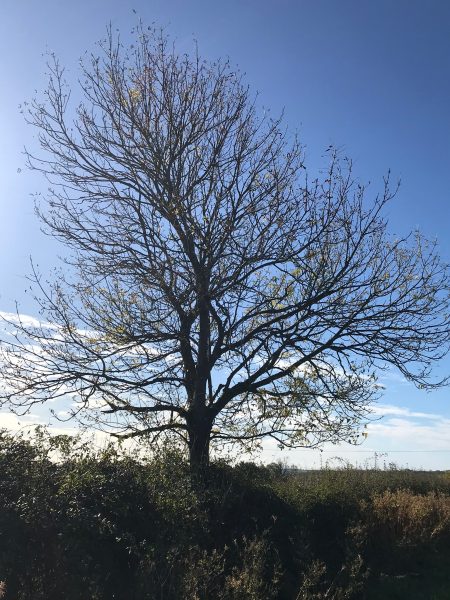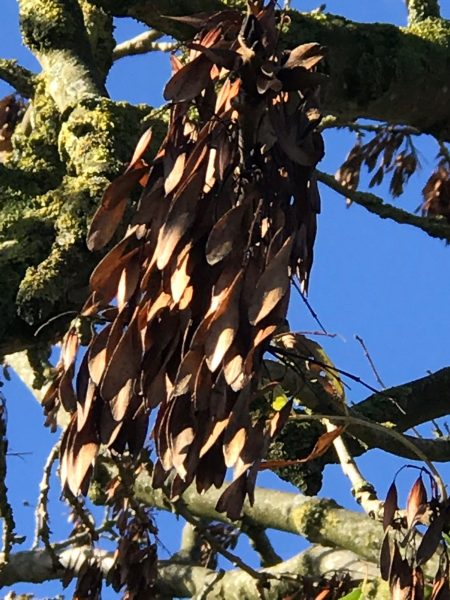October can be an unpredictable month weather wise, and this year we’ve already seen gales, exceptionally high temperatures and early on, rainfall of approximately one and a half inches in two days and as the month comes to an end the rain has returned.
However, this does mean that it’s also a wonderful time for looking at the trees around us as they either release their leaves for the winter or grimly hang on to them, twisting and turning in the wind. The skeleton of the trees are gradually being revealed in all their glory but even the young trees of Jubilee Wood give you an idea of how magnificent they are going to be. These youngsters, not even adolescents yet, are digging their roots down into the soil and laying strong foundations for the years to come.
Specific species of trees have wonderful folklore attached to them and I’ve be looking at stories associated with trees that can be found in the wood.
One of the most prolific trees is the Ash (Fraxinus), and in British folklore, it seems that the ash was credited with a range of protective and healing properties, most frequently related to child health. Weak children, especially those suffering with rupture or weak limbs, would be passed naked through a cleft in an ash tree or ash sapling, to cure them. The cleft was often specifically made for the purpose and bound together again after the ceremony to heal over as the child also healed. This could create an intimate bond between the welfare of the now related tree and person, with the suggestion that any harm to the tree would be reflected in the healed person’s life, making them understandably protective of ‘their’ ash tree. Perhaps it would be a good idea if we all adopted a tree for life!
In more practical terms, the strength and elasticity of Ash wood is said to allow a joint of ash to bear more weight than any other wood. Coach axles were made of ash as were oars and tool handles and when coppiced properly, long straight poles can be cut for bean poles within five years and if you can wait long enough, you can make strong oars after about twenty years. Coppicing can also increase longevity, as an eighteen-foot-diameter stool in Suffolk has been estimated to be over a thousand years old!
Interestingly, the Latin name for the Ash, Fraxinus, means firelight and it is one of the traditional woods used as the yule log as it burns for a long time with an intense heat whether seasoned or green. So there are many practical uses as well as folklore attributed to the Ash which is such a majestic tree. Unfortunately, a relatively recent predator is threatening it.
Ash dieback, Hymenoscyphus fraxineus, was first recorded in 2012 but was probably here long before that. It is a fungal pathogen which interferes with the water transport pathways of the trees causing leaf loss and lesions in the wood and bark. Older trees take longer to succumb but younger trees decline quickly as the fungus lives in leaf litter and releases thousands of airborne spores which can constantly reinfect the trees. It would be a terrible loss to our environment if this magnificent tree which is home to several hundred species including woodmice, birds, fungi, lichens and beetles were to disappear.
It’s a reminder to all of us to enjoy the wonderful force of nature which is always changing, and a walk around Jubilee Wood is a window on that world. Look out for Ash trees when you when you’re next walking around!
The Wood Wanderer
The elegant Ash tree can grow up to 35 metres
Once the female flowers have been pollinated by wind in the spring, fruits or keys form in late summer or autumn and fall off in winter or early spring to be dispersed by birds or animals.


Leave a Reply